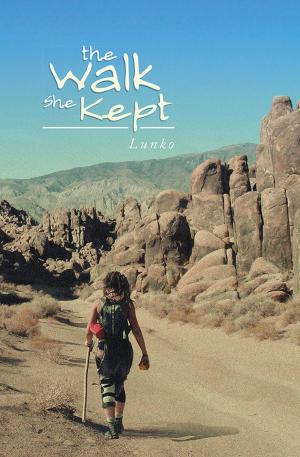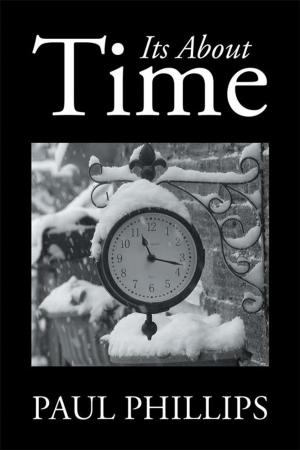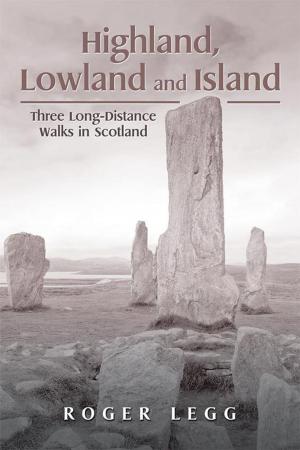Death of Augustus His Conversion to Christ
Fiction & Literature, Literary Theory & Criticism, Nonfiction, Religion & Spirituality| Author: | Colin Kirk | ISBN: | 9781483693347 |
| Publisher: | Xlibris UK | Publication: | December 12, 2013 |
| Imprint: | Xlibris UK | Language: | English |
| Author: | Colin Kirk |
| ISBN: | 9781483693347 |
| Publisher: | Xlibris UK |
| Publication: | December 12, 2013 |
| Imprint: | Xlibris UK |
| Language: | English |
Myth and the Church Augustus Caesar, Son of God, started the Christiancalendar. Moreover, he also contributed massively to thepersona of Christ, to Christianity and to the ChristianChurch. Indeed, Jesus, a Jewish prophet, was transformedin the process to become the God of Christian Europe. Augustus, the Godfather of Europe, spawned a religion aliento Rome and the world of Rome he had created. This was not the work of Augustus himself. However, Augustus was the luminary of the Roman state religion before he was transformed into the second person of the Trinity. The processes involved in these changes are followedthrough the rst four centuries of the Christian era. A brieflook at developments since highlight the Christian churchs continued inuence on the western European knowledgebase. Here you can check out your own mindset, against factors that are still crazily inuential. The cover illustration is of a restored cult gure of Augustus, one of thousands destroyed by Christian zealots let loose in 395. Most of the hood of the toga of Pontifex Maximus is missing. This example is at Thyatira, to where John sent a copy of his Revelations. All seven churches of the Apocalypse were in the Roman province of Asia. Just off the coast is the island of Samos, where Augustus lived when he was in the area. Patmos, where John wrote his Revelations during his exile there, is a bit further out in the Aegean Sea. The reverse of an Augustan aureus, on the spine, shows the winged victory standing on the globethat Augustus had installed as centerpiece of the Roman Curia. It was carried at his funeral to leadthe procession from the forum to his mausoleum. At the end of the fourth century it was removed from the Curia and reinstated three times. Finally Ambrosius, Bishop of Milan, insisted it be takenout and utterly destroyed. Rome and the world of Rome collapsed shortly afterwards. Augustus last 100 days were extremely busy. He was supposedto have suffered from the weariness of old age before then. But after ofcial functions in Rome he went to Capri for a few days, thenon to the Games in Naples, where heindulged in horse play with the athletes and on to Beneventum to review his armies, before they set off to war. His death at the old family home atNola is well documented, down totime and day. Its the year thats in dispute here. Christian historians strove to proveJesus was the Messiah by his dateof birth. They also wanted to knowwhen the Second Coming of Christwould occur. In the process they hadto alter the date of Augustus death. Much was destroyed to cover their tracks. Fortunately enough remainsin the debris to reconstruct the real chronology of the period. Surprisingly much else remainedto be unearthed. Cicero, not Herod,ordered the massacre of the innocents. Wise men from the east visited Augustus. Its all there for the digging.
Myth and the Church Augustus Caesar, Son of God, started the Christiancalendar. Moreover, he also contributed massively to thepersona of Christ, to Christianity and to the ChristianChurch. Indeed, Jesus, a Jewish prophet, was transformedin the process to become the God of Christian Europe. Augustus, the Godfather of Europe, spawned a religion aliento Rome and the world of Rome he had created. This was not the work of Augustus himself. However, Augustus was the luminary of the Roman state religion before he was transformed into the second person of the Trinity. The processes involved in these changes are followedthrough the rst four centuries of the Christian era. A brieflook at developments since highlight the Christian churchs continued inuence on the western European knowledgebase. Here you can check out your own mindset, against factors that are still crazily inuential. The cover illustration is of a restored cult gure of Augustus, one of thousands destroyed by Christian zealots let loose in 395. Most of the hood of the toga of Pontifex Maximus is missing. This example is at Thyatira, to where John sent a copy of his Revelations. All seven churches of the Apocalypse were in the Roman province of Asia. Just off the coast is the island of Samos, where Augustus lived when he was in the area. Patmos, where John wrote his Revelations during his exile there, is a bit further out in the Aegean Sea. The reverse of an Augustan aureus, on the spine, shows the winged victory standing on the globethat Augustus had installed as centerpiece of the Roman Curia. It was carried at his funeral to leadthe procession from the forum to his mausoleum. At the end of the fourth century it was removed from the Curia and reinstated three times. Finally Ambrosius, Bishop of Milan, insisted it be takenout and utterly destroyed. Rome and the world of Rome collapsed shortly afterwards. Augustus last 100 days were extremely busy. He was supposedto have suffered from the weariness of old age before then. But after ofcial functions in Rome he went to Capri for a few days, thenon to the Games in Naples, where heindulged in horse play with the athletes and on to Beneventum to review his armies, before they set off to war. His death at the old family home atNola is well documented, down totime and day. Its the year thats in dispute here. Christian historians strove to proveJesus was the Messiah by his dateof birth. They also wanted to knowwhen the Second Coming of Christwould occur. In the process they hadto alter the date of Augustus death. Much was destroyed to cover their tracks. Fortunately enough remainsin the debris to reconstruct the real chronology of the period. Surprisingly much else remainedto be unearthed. Cicero, not Herod,ordered the massacre of the innocents. Wise men from the east visited Augustus. Its all there for the digging.







![Cover of the book Where the Uk Went Wrong [1945-2015] by Colin Kirk](https://www.kuoky.com/images/2015/may/300x300/9781493193486-DhDy_300x.jpg)







